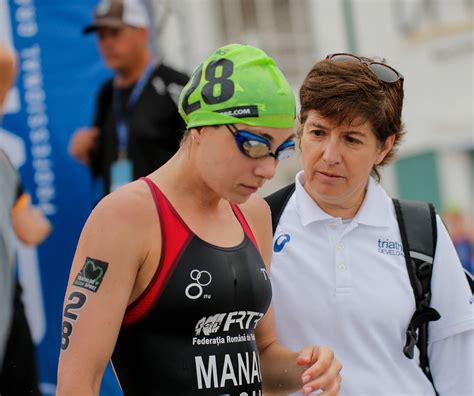How to optimize workout intensity for maximum muscle gains & peak performance in less time?

In the pursuit of an impressive physique and top-tier physical capabilities, many believe that more time in the gym automatically translates to better results. However, the secret to maximizing muscle gains and achieving peak performance, especially when time is a precious commodity, lies not in endless hours but in the intelligent optimization of workout intensity. This article will guide you through the principles and practical strategies to make every minute of your training count, fostering superior strength and hypertrophy more efficiently than ever before.
Understanding Workout Intensity: Beyond Just Heavy Weights
Workout intensity is often misunderstood as simply lifting the heaviest weight possible. While heavy loads are a component, true intensity encompasses the overall physiological stress placed on your body during exercise. It’s about how hard you’re working relative to your maximum capacity. Key metrics include:
- Relative Intensity (RPE/RIR): Rate of Perceived Exertion (RPE) and Reps In Reserve (RIR) are subjective but powerful tools. An RPE of 8-9 (1-2 RIR) means you have 1-2 reps left in the tank, indicating high intensity without full failure.
- Load: The actual weight lifted. Training with a percentage of your one-rep max (1RM) is a direct measure of load intensity.
- Density: The amount of work done in a given timeframe. Shorter rest periods with the same volume increase density, thus increasing intensity.
- Volume: The total number of sets and reps performed. While not intensity itself, optimizing volume with appropriate intensity is crucial.

The Science Behind Optimal Intensity for Muscle Gains
Muscle growth, or hypertrophy, is primarily stimulated by three factors: mechanical tension, muscle damage, and metabolic stress. Optimal workout intensity directly influences all three.
- Mechanical Tension: This is the primary driver of hypertrophy. Lifting heavy weights through a full range of motion creates significant tension on muscle fibers, signaling them to grow stronger and larger.
- Muscle Damage: Intense workouts cause microscopic tears in muscle fibers. The repair process following this damage leads to muscle adaptation and growth.
- Metabolic Stress: The accumulation of byproducts (like lactate) during high-rep, short-rest sets creates a “pump” sensation. This metabolic stress also contributes to muscle growth by stimulating cellular swelling and anabolic signaling.
The sweet spot for hypertrophy often involves challenging weights (65-85% 1RM) performed for 6-15 repetitions, taken close to or at muscular failure, with sufficient volume.
Key Strategies to Optimize Intensity for Muscle Growth
Implementing these strategies can dramatically enhance your workout effectiveness:
- Progressive Overload: The golden rule of muscle gain. Consistently challenge your muscles by gradually increasing weight, reps, sets, decreasing rest, or improving form over time. Without progressive overload, your muscles have no reason to adapt and grow.
- Strategic Rep Ranges and Set Volume: While heavy lifting is important, don’t neglect moderate rep ranges (8-12 reps) and even higher rep ranges (15-20 reps) to target different muscle fiber types and enhance metabolic stress. Aim for 10-20 hard sets per muscle group per week.
- Mind-Muscle Connection: Focus intensely on contracting the target muscle during each rep. This enhances neural drive and ensures the right muscles are doing the work, making lighter loads feel heavier.
- Optimal Rest Periods: For strength and hypertrophy, 60-120 seconds between sets is often ideal, allowing enough recovery for subsequent sets to be performed with intensity, but not so long that intensity drops.
- Training to Failure (or Close): Regularly take sets to 1-3 reps in reserve (RIR), and occasionally to complete muscular failure, especially on isolation exercises. This ensures sufficient stimulus for growth.
- Advanced Training Techniques: Incorporate methods like drop sets, supersets, giant sets, forced reps, and negative training to push past plateaus and increase intensity within a shorter timeframe.

Elevating Performance with Smart Intensity
Optimizing intensity isn’t just for aesthetics; it’s fundamental for peak athletic performance. High-intensity training improves power, endurance, and overall work capacity.
- Periodization: Systematically varying training intensity, volume, and exercise selection over cycles (e.g., mesocycles, microcycles) helps prevent overtraining, optimize adaptations, and ensure you peak for specific events or personal best attempts.
- Compound Movements as Foundation: Exercises like squats, deadlifts, bench presses, and overhead presses engage multiple muscle groups, allowing you to lift heavier and elicit a greater systemic response, boosting overall performance and hormonal release.
- Incorporate Explosive Training: Plyometrics and Olympic lifts, performed with high intent and maximal effort, significantly improve power output and athleticism.

Achieving More in Less Time: The Efficiency Edge
To maximize gains and performance in a limited timeframe, smart intensity is your greatest ally:
- Prioritize Compound Lifts: These give you the most bang for your buck, recruiting more muscle and burning more calories in less time.
- Supersets and Giant Sets: Pair exercises for antagonistic muscles (e.g., chest and back) or non-competing muscle groups to reduce rest time and increase density.
- Circuit Training: Perform a series of exercises back-to-back with minimal rest in between, followed by a longer rest period. This is excellent for conditioning and muscular endurance.
- Focus and Minimize Distractions: Stay present during your workout. Minimize phone usage and social chit-chat to keep your heart rate up and maintain intensity.
- Warm-up and Cool-down Smartly: A dynamic warm-up prepares your body efficiently. A brief cool-down aids recovery without eating into prime training time.

Listen to Your Body and Prioritize Recovery
High-intensity training demands a robust recovery strategy. Without adequate sleep, nutrition, and strategic rest, you risk overtraining, injury, and diminished returns. Pay attention to signs of fatigue, persistent soreness, or a drop in performance, and don’t hesitate to implement a deload week or take an extra rest day.

Conclusion
Optimizing workout intensity is the cornerstone of efficient and effective training for muscle gains and peak performance. By understanding what intensity truly means, strategically applying progressive overload, leveraging advanced techniques, and training intelligently, you can achieve remarkable results in less time. Embrace smart training, focus on quality over quantity, and unlock your full potential in the gym.








